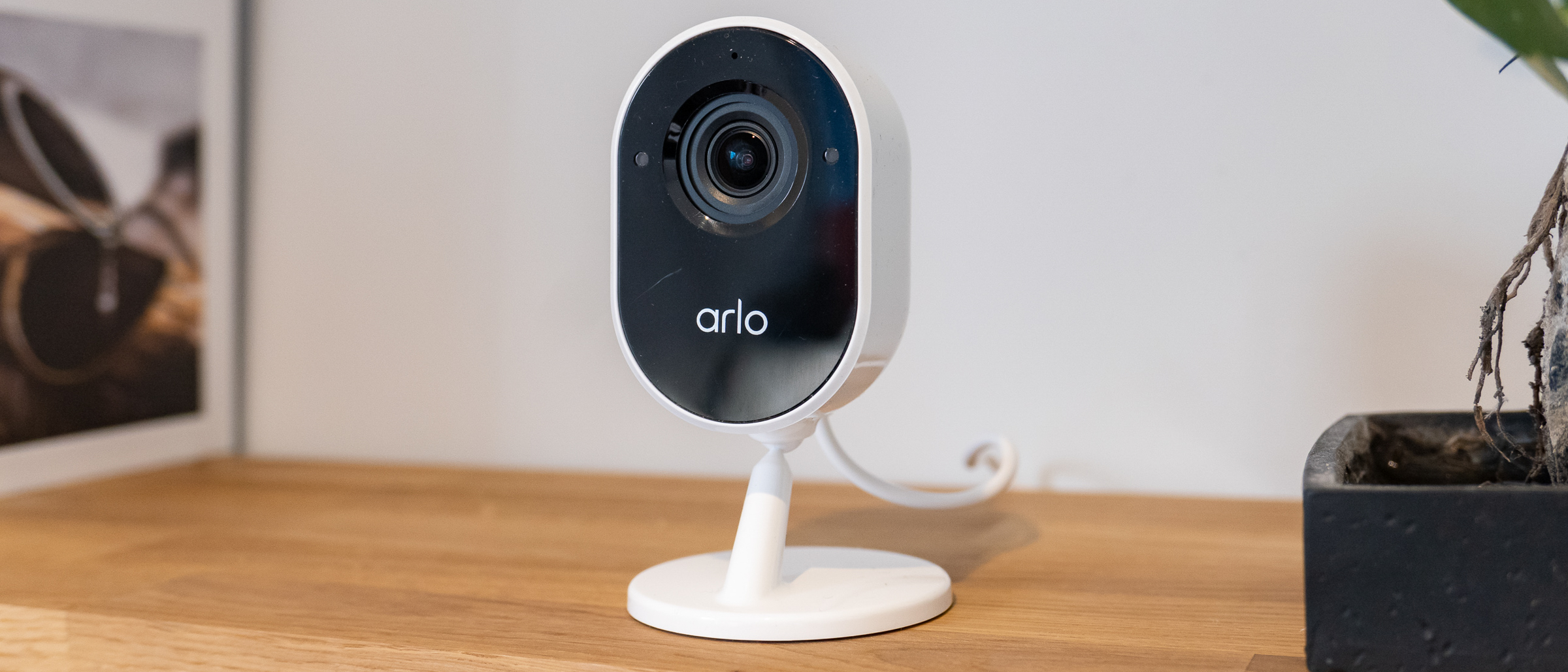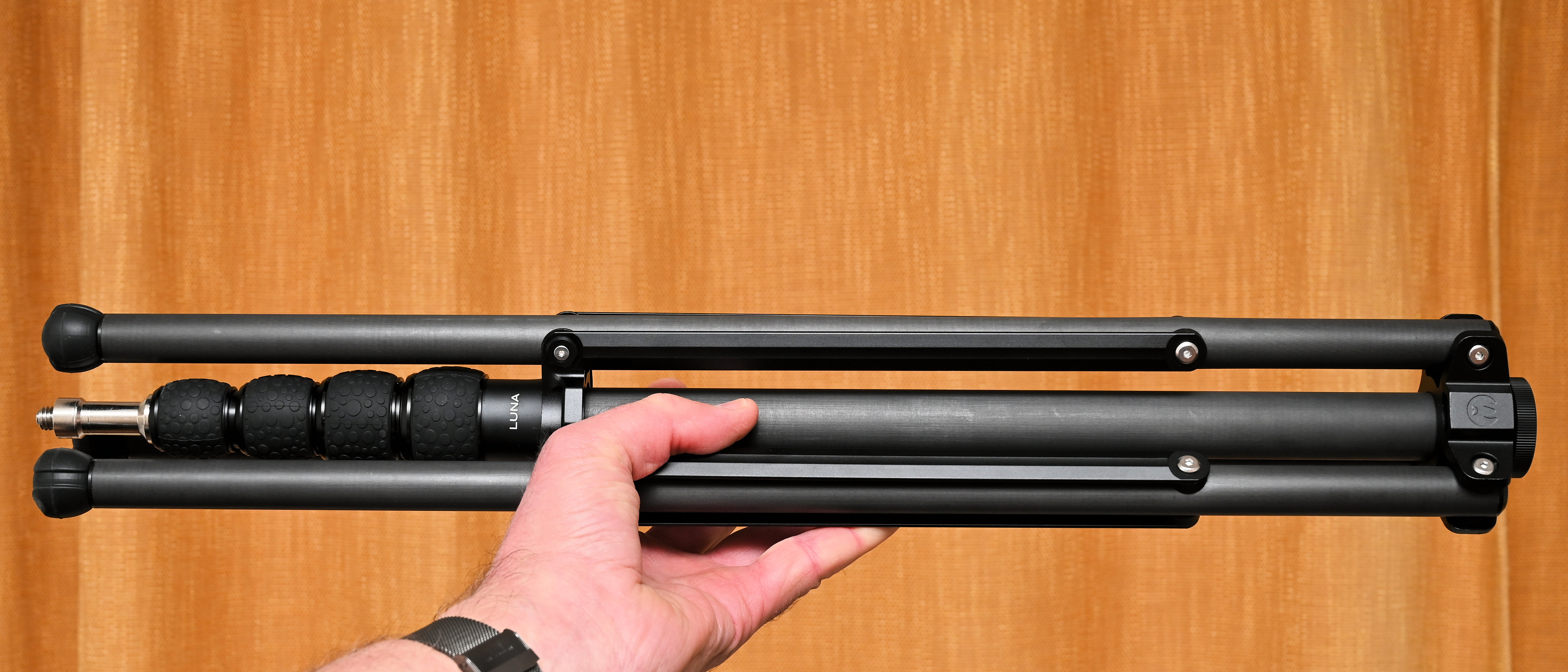Digital Camera World Verdict
The Arlo Essential Indoor Camera a well-made indoor camera that is nicely designed, easy to set up, records high-quality HD video and works well. We like how it connects to Alexa and Google Assistant smart displays, and seeing footage on an Apple Watch is useful too. There are cheaper indoor security cameras out there, but setting up an Arlo camera feels like a premium experience. It all works well, telling the camera to only record when it sees certain types of movement is very useful.
Pros
- +
Good design
- +
High quality video
- +
Smart home integration options
Cons
- -
Expensive
- -
Most features require monthly subscription
- -
No support for Apple HomeKit
Why you can trust Digital Camera World
Arlo has been making smart security cameras since 2014 and introduced its lower-priced Essential range in 2020. Here we are looking at the indoor member of that Essential family, which carries a retail price of $100/£120 and records in 1080p Full HD resolution. There’s also night vision, two-way audio and, importantly, a privacy shield to block the lens when you don’t want the camera to be recording.
Other useful features include person, animal, vehicle and package detection, activity zones and more customisation over how the camera works, plus 30 days of cloud video storage. However, these are all a part of Arlo Secure, the subscription service that costs £2.99/£2.79 a month per camera, or $10.99/£8.99 for unlimited cameras. The Essentials Indoor Camera comes with a three-month free trial of Arlo Secure.
Without Arlo Secure, the camera can only be used to alert you to movement, then show you a live video stream of what’s going on. Footage is not recorded and movement detection is not configurable.
• See also Best indoor security cameras
Arlo Essential Indoor Camera: specifications
Resolution: 1080p Full HD
Field-of-view: 130 degrees
Two-way audio: Yes
Battery: No, mains powered
Night vision: Yes, infrared
Configurable motion sensing: Yes
Key features
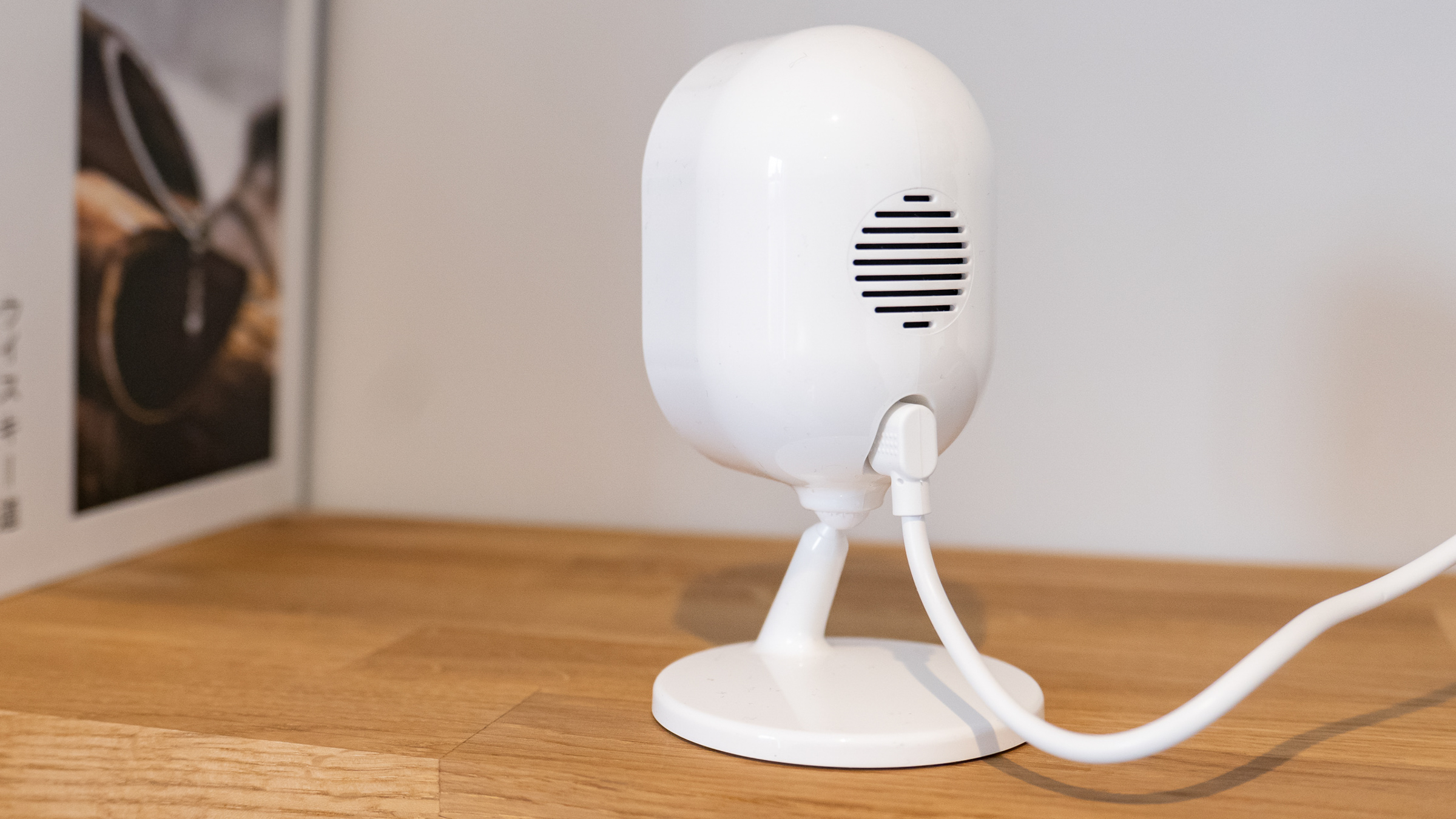
Many of the camera’s key features are only available when paying for Arlo Secure. However, one useful feature baked into the camera is its powered privacy shield. This can be controlled manually through the Arlo app, blocking the lens and stopping recording of video and audio with a tap. Or, geofencing can be used where the shield closes when you are at home (based on the location of your smartphone), then opens when you go out. We like this feature, as it helps prevent owners (and especially household guests) from feeling uncomfortable at the sight of a security camera pointing at them.
Other standard features include Full HD video streaming, infrared night vision that we found to work very well, and two-way audio for interacting with whoever the camera is looking at through the Arlo phone app. This can be useful for checking in on children or pets, and even warding off burglars.
Build and handling
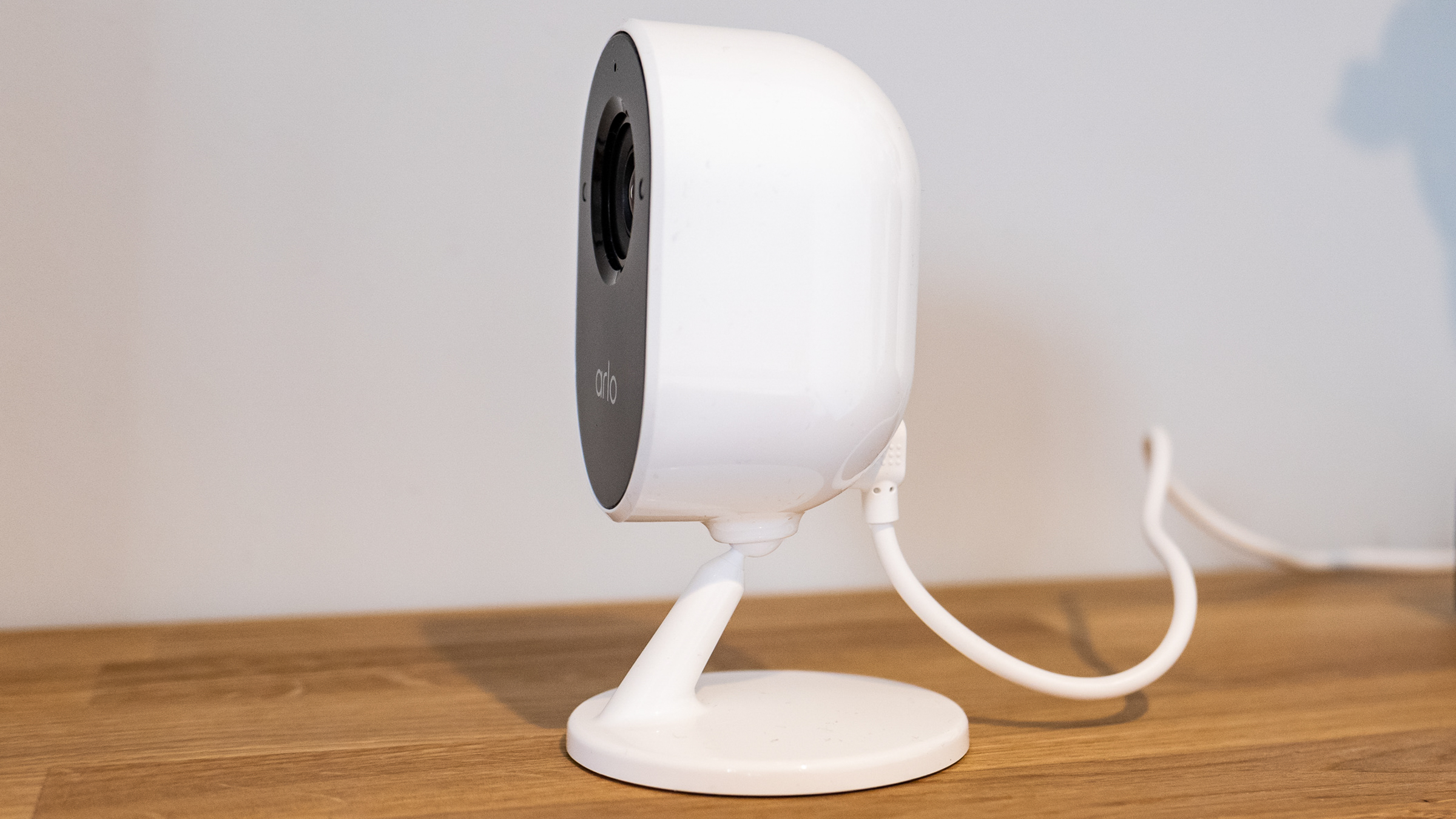
The camera sits on its plastic stand with a ball-and-socket joint allowing for a good range of movement in every direction. This ensures you can position the camera however you like, with the large foot helping to keep it stable.
We would describe the design as interior-friendly, in that the curved, organic shape helps the Arlo to blend into a home setting, instead of standing out any more than it needs to. The glossy black front houses the lens and features an Arlo logo, while the rear is where you will find the speaker, and a microUSB port for the included power cable.
Being white and set against the black front of the camera, the lens shield is very visible, making it easy to tell when the camera is active or obscured. A status light helps here too, but that can be disabled in the app if you prefer.
Also included on the box are plug adaptors for the UK and Europe, and a base plate designed for fixing the camera base to a wall. Helping here are an included pair of screws and wall plugs.
The camera feels well made and sturdy, but being an indoor camera it isn’t water resistant and so shouldn’t be installed outdoors.
Performance
Setting up the Arlo Essential Indoor Camera is a fairly simple process. Create an Arlo account with the smartphone app, or log in if you already have one, switch on the camera, press a button to begin the sync process, and that’s about it. Our camera spent a few minutes installing a new firmware update, then it was good to go.
From here, you can use the app to adjust how the camera’s motion sensing works – if you want it to respond to the sight of vehicles and animals, for example, or only alert you when people are seen. Activity zones can be created, where the camera will only alert you and start recording if motion is spotted in a certain location.
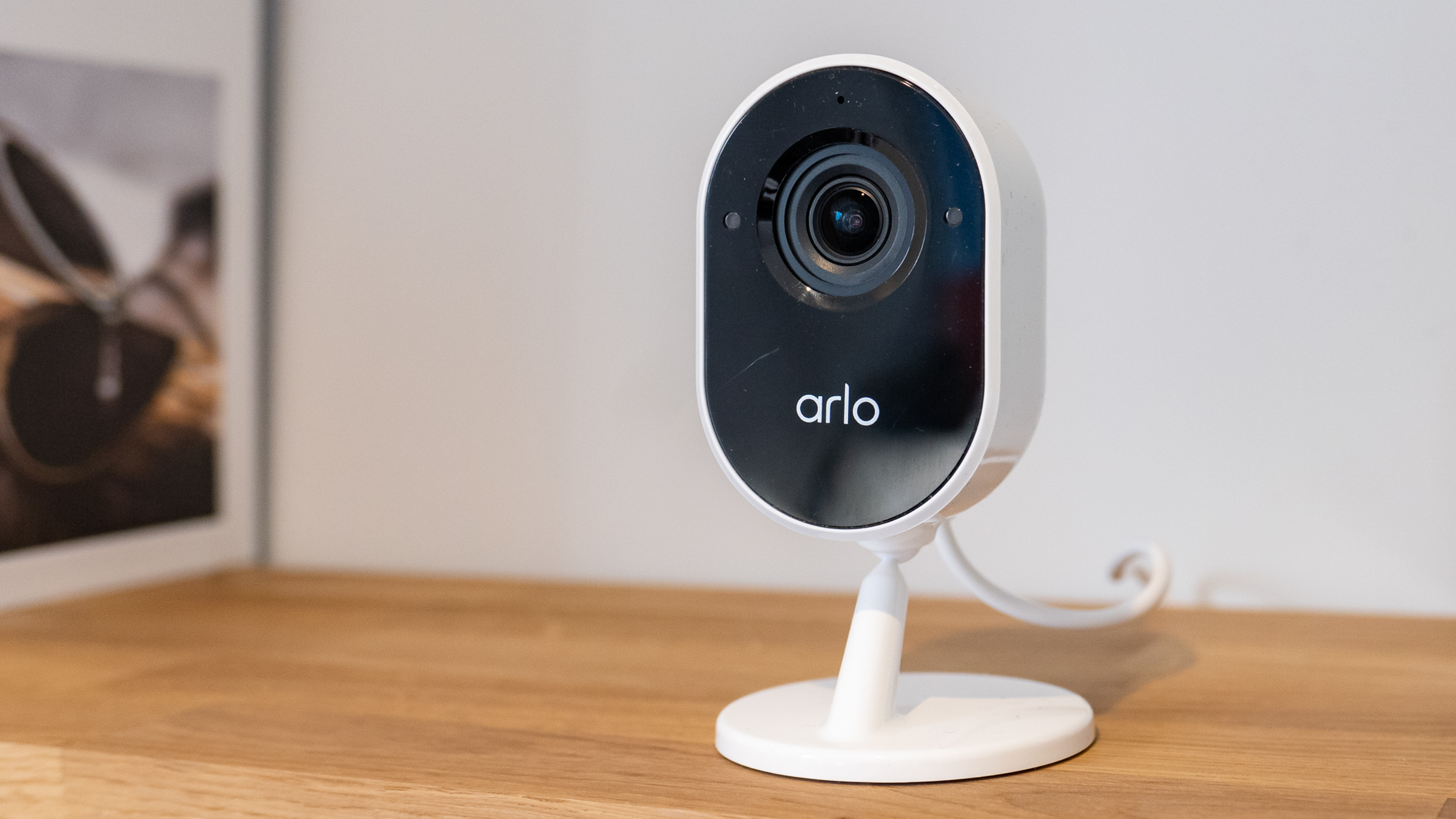
We have been impressed with the Arlo’s video quality, which is sharp, bright and shows great detail. The brightness can be adjusted up or down by a few notches, but for us we found the default setting to be just fine. Audio quality is also good, with the speaker and microphone capable of delivering a conversation if needed.
Notifications come through quickly, almost as soon as movement is detected, but the app can sometimes be a little sluggish when connecting to the camera manually.
Additional features include integration with Amazon Alexa and Google Assistant, where the camera’s view can be streamed to Amazon Echo and Google Nest smart displays. IFTTT support is also included, plus the camera works with SmartThings, and can send live video to the Apple Watch too. The only feature missing here is not working as an Apple HomeKit camera.
Arlo Essential Indoor Camera: Verdict
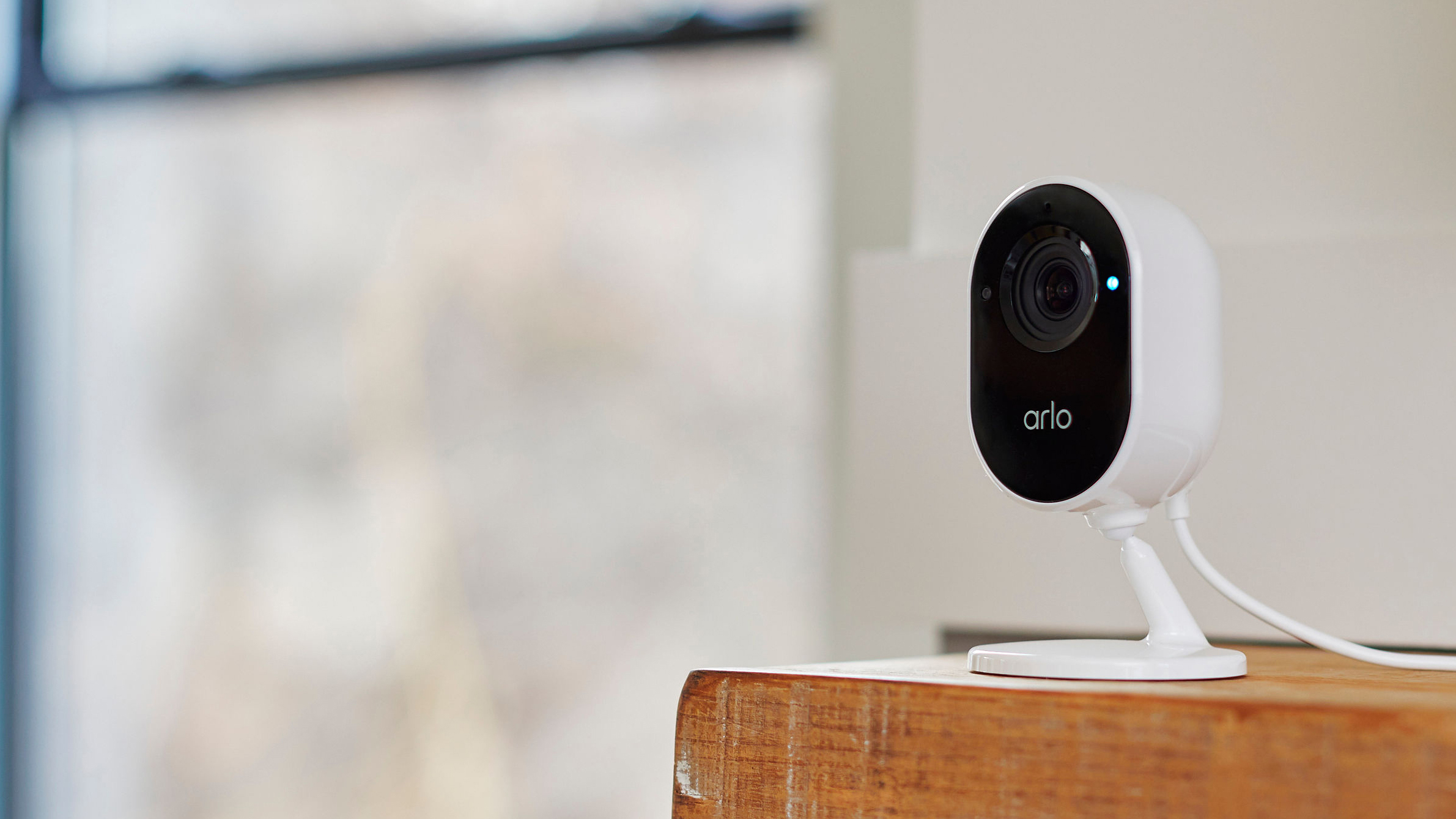
This camera from Arlo is fairly expensive, at $100/£120 plus monthly subscription to unlock all features. But it’s a well-made indoor camera that is nicely designed, easy to set up, records high-quality HD video and works well. We like how it connects to Alexa and Google Assistant smart displays, and seeing footage on an Apple Watch is useful too.
There are plenty of cheaper indoor security cameras out there, but setting up an Arlo camera feels like a premium experience. It all works well, telling the camera to only record when it sees certain types of movement is very useful, and Arlo offers a range of other cameras, for outdoors use, that can be added to your system.
Useful buying guides:
The best body cameras for personal security
Alistair has been a journalist since 2011 and used to be Deputy Technology Editor at IBTimes in London. His specialist tech subjects include smart home gadgets, phones, wearables, tablets and dashcams. He is the host of The AutoChat Podcast.
